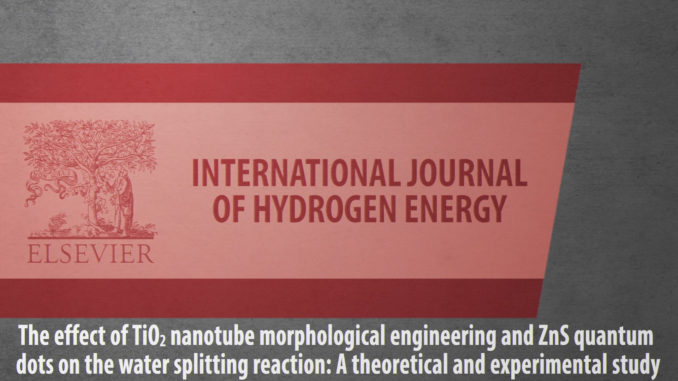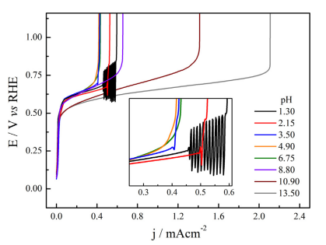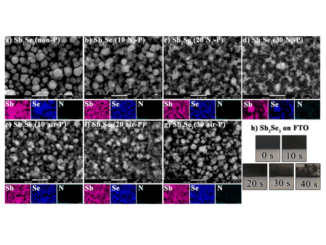
The effect of TiO2 nanotube morphological engineering and ZnS quantum dots on the water splitting reaction: A theoretical and experimental study
Abstract: Ordered arrays of TiO2 nanotubes with smooth and rippled morphologies were prepared by one-step titanium oxidation in NH4F and ethylene glycol solution. The samples were then decorated with ZnS using a microwave-assisted solvothermal method. The experiments under constant or pulsed applied voltage resulted in smooth and rippled TiO2material morphologies, respectively. Field emission scanning electron microscopy, incident photon-to-current efficiency, linear sweep voltammetry and electrochemical impedance spectroscopy were used to investigate the structure and morphology of the TiO2 nanotubes, along with their photoelectrochemical activity in the water splitting reaction. An envelope function was proposed to correlate the anisotropic morphologies and broad distribution of mobility due to the random nature of charge carrier transport. The smooth and rippled morphologies were evaluated using the transmission line model. First-principles quantum mechanical calculations based on the density functional theory at the B3LYP level are conducted to obtain a better understanding of optical properties of TiO2.
Author(s): Santanna, M. A.; Menezes, W. T.; Santana, Y. V. B.; et al.
International Journal of Hydrogen Energy
Volume: 43 Issue: 14 Pages: 6838-6850 Published: 2018
DOI: https://doi.org/10.1016/j.ijhydene.2018.02.113




